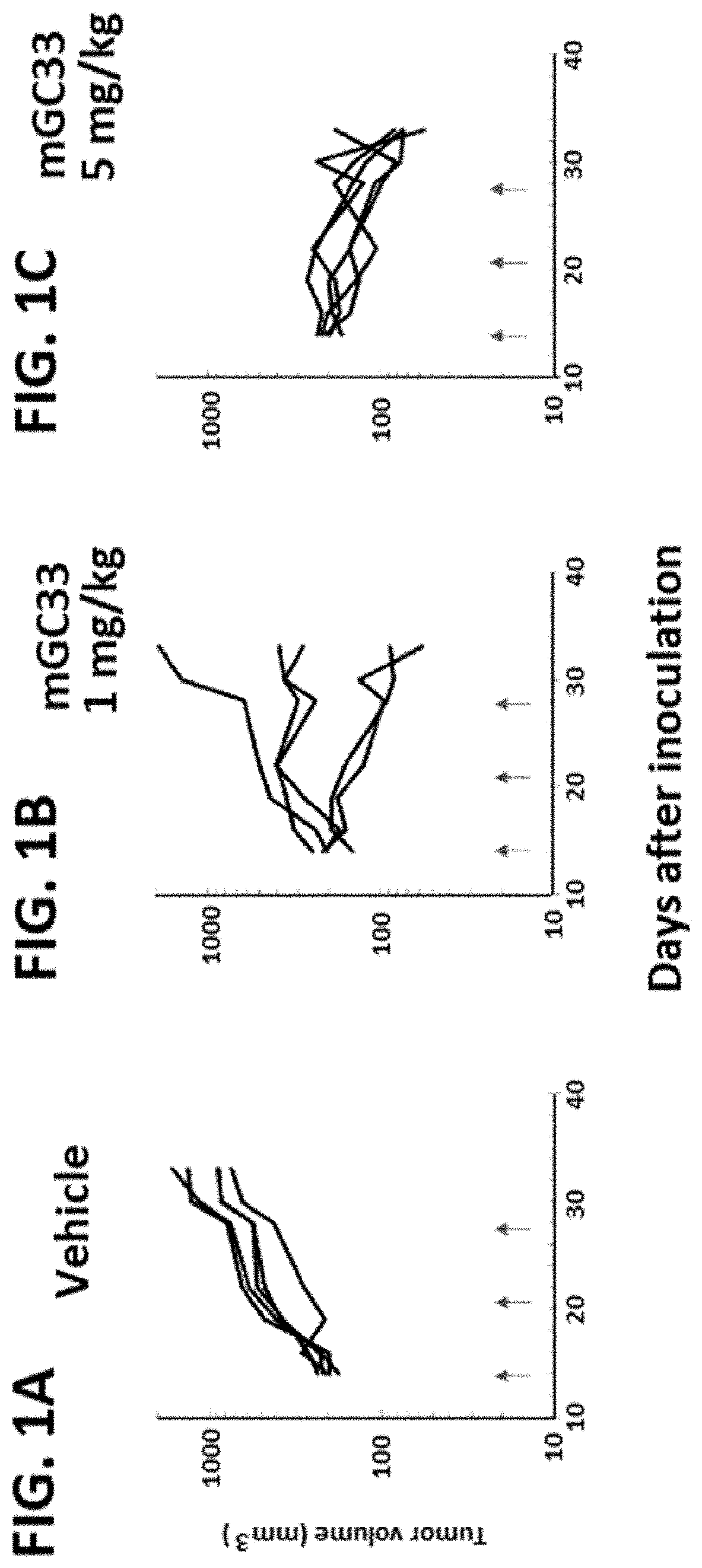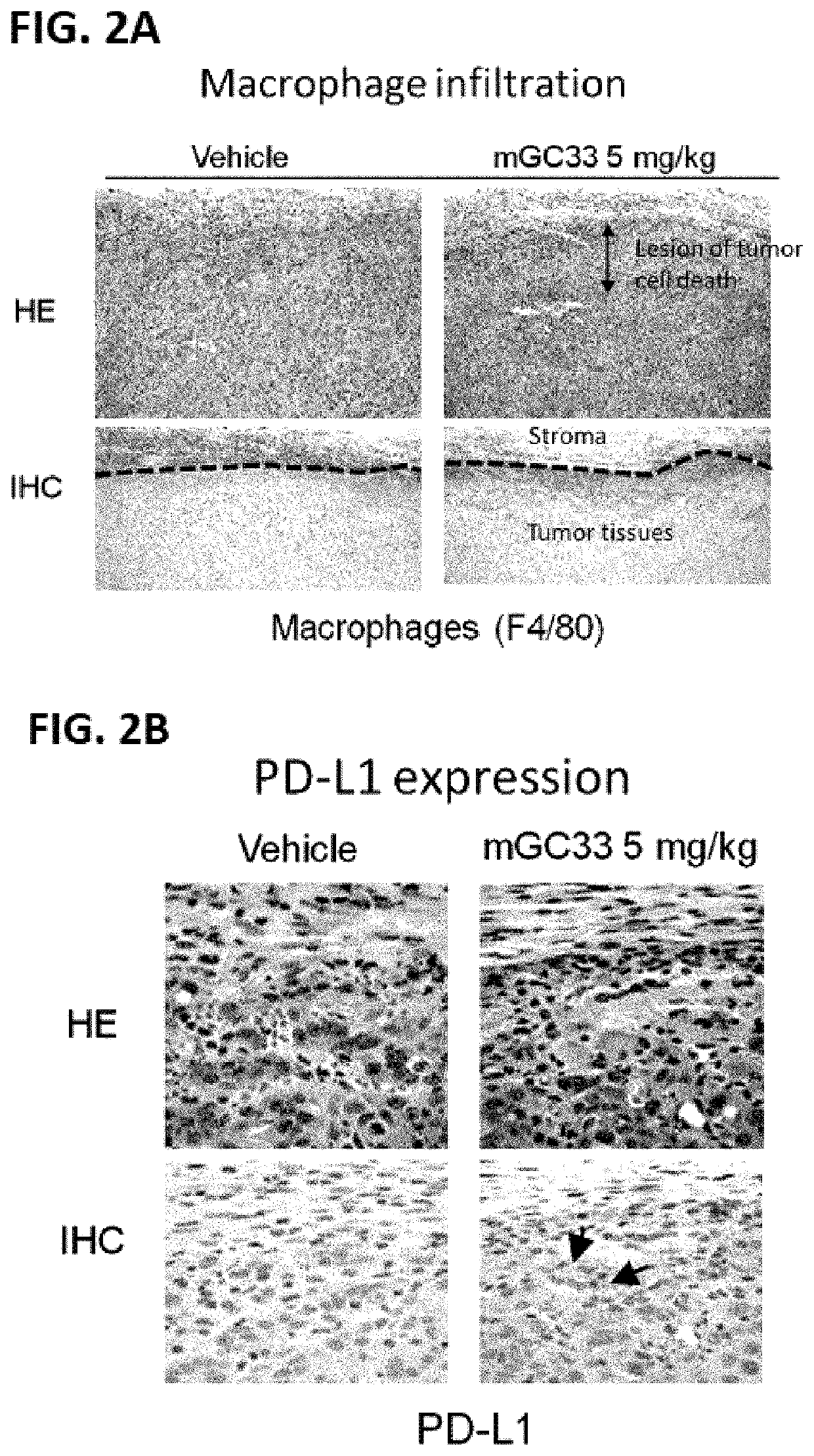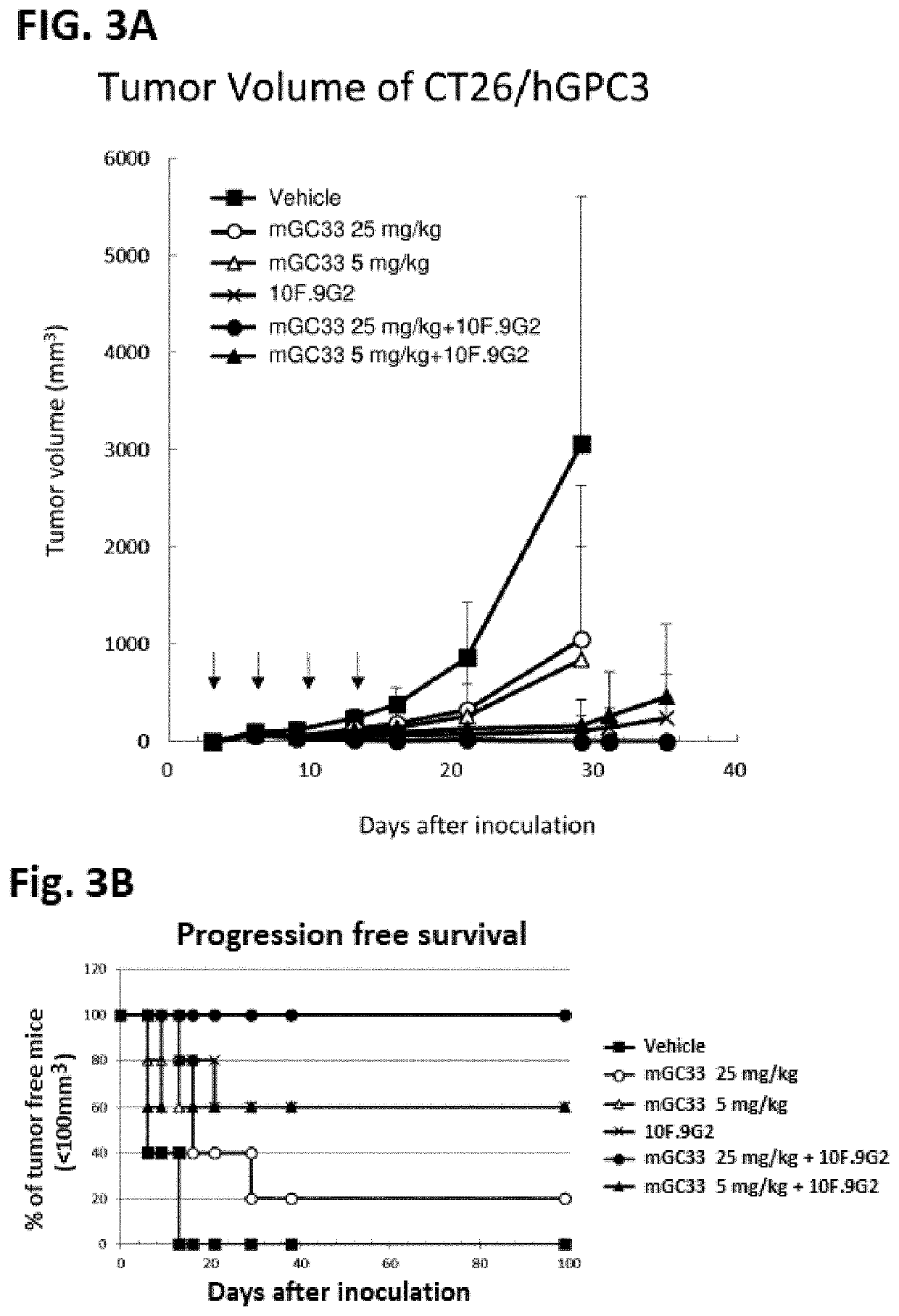Dosage regimen for combination therapy using pd-1 axis binding antagonists and gpc3 targeting agent
a technology of pd1 axis and targeting agent, which is applied in the direction of antibody medical ingredients, peptide/protein ingredients, drug compositions, etc., can solve the problems of insufficient efficacy of chemotherapy, chemoembolization, ablation, proton beam therapy, etc., and achieve enhanced priming, proliferation and/or cytolytic activity, and activation
- Summary
- Abstract
- Description
- Claims
- Application Information
AI Technical Summary
Benefits of technology
Problems solved by technology
Method used
Image
Examples
example 1
[0374]Mouse Cell Lines Expressing Human Glypican-3 (GPC3)
[0375]Mouse cancer cell lines, Hepa1-6 (ATCC No. CRL-1830) and CT26 (ATCC No. CRL-2638) were transfected with human GPC3 expression vector, pCXND2 / hGPC3(FL)[Ishiguro T. et al., Cancer Res. 2008; 68: 9832-9838] using FuGENE6 (Roche Diagnostics Corp) and selected with 1 mg / mL G418 (Invitrogen). Cells that grew even in the presence of G418 were collected, and the colonies were isolated by limiting dilution. Expression of human GPC3 were confirmed by FACS using anti-human GPC3 antibody, GC33 [Ishiguro T. et al., Cancer Res. 2008; 68: 9832-9838]. Representative clones were selected and used for the experiments.
example 2
[0376]Anti-Tumor Activity of Anti-GPC3 Antibody in Syngenic Mouse Model Using Hepa1-6 Cell Line Expressing Human GPC3
[0377]Hepa1-6 / hGPC3 cells were cultured using cell culture flasks in an incubator (set at 37° C. and 5% CO2). The cells were detached from the flasks with trypsin and washed with D MEM containing 10% (v / v) FBS, 0.6 mg / mL G418. Then the cells were re-suspended in D-MEM (2×108 cells / mL), and an equal volume of Matrigel was added. The cell concentrations for implantation were 1×108 cells / mL. The cells were inoculated subcutaneously into the right flank of each C57BL / 6J mouse (Charles River Laboratories Japan) (1×107 cells / mouse). Once palpable tumors were established, animals were randomized into testing groups so that each group had similar mean tumor volumes when the study started. Either 1 or 5 mg / kg of mouse GC33 anti-human GPC3 monoclonal antibody [WO2006 / 006693] diluted in PBS, or PBS as a vehicle control was injected at day 14, 21 and 28 intravenously after tumor ...
example 3
[0378]Pathological Changes Induced by Anti-GPC3 Antibody in Syngenic Mouse Model Using Hepa1-6 Cell Line Expressing Human GPC3
[0379]To assess the changes in the Hepa1-6 tumor tissue by mouse GC33 treatment, tumor tissue isolated either after 3 or 7 days from the single injection either of mouse GC33 antibody or vehicle control was used for the pathological examination. Tumor tissues were fixed by 4% parafolmaldehyde (PFA) and embedded in paraffin by the AMeX method [Suzuki et al, J Toxicol Sci. 2002; 27:165-172, Watanabe et al, J Toxicol Pathol. 2015; 28: 43-49]. Three micro-meter paraffin sections were stained with hematoxylin and eosin (HE) or immunohistochemically (IHC). IHC staining was performed according to the labeled streptavidin-biotin (LSAB) method (RTU horseradish peroxidase streptavidin). Antibodies against F4 / 80 (marker antigen of murine macrophages; A3-1, BioLegend), PD-L1 (marker antigen of mouse B7-H1 / PD-L1; AF1019, R&D systems) were used as the primary antibodies. T...
PUM
| Property | Measurement | Unit |
|---|---|---|
| time | aaaaa | aaaaa |
| concentration | aaaaa | aaaaa |
| dissociation constant | aaaaa | aaaaa |
Abstract
Description
Claims
Application Information
 Login to View More
Login to View More - R&D
- Intellectual Property
- Life Sciences
- Materials
- Tech Scout
- Unparalleled Data Quality
- Higher Quality Content
- 60% Fewer Hallucinations
Browse by: Latest US Patents, China's latest patents, Technical Efficacy Thesaurus, Application Domain, Technology Topic, Popular Technical Reports.
© 2025 PatSnap. All rights reserved.Legal|Privacy policy|Modern Slavery Act Transparency Statement|Sitemap|About US| Contact US: help@patsnap.com



